Associated Press is one of those news sources we expect to be objective and reliable. But when it comes to the subject of Israel-Palestine, things are not always as they seem.
by Kathryn Shihadah and Alison Weir, originally published on If Americans Knew Blog
More than half the world’s population reads Associated Press content every day.
But a study of news reports so far in 2018 indicates that this trusted news source has been presenting the deaths of Israelis at the hands of Palestinians, and of Palestinians at the hands of Israelis, in two completely different ways.
This pattern may be a factor in how readers perceive the players in this decades-old issue. It is also, quite likely, a factor in how editors all over the U.S., who read AP stories daily, view the conflict.
So far in 2018, eleven Palestinians have been killed and two Israelis.
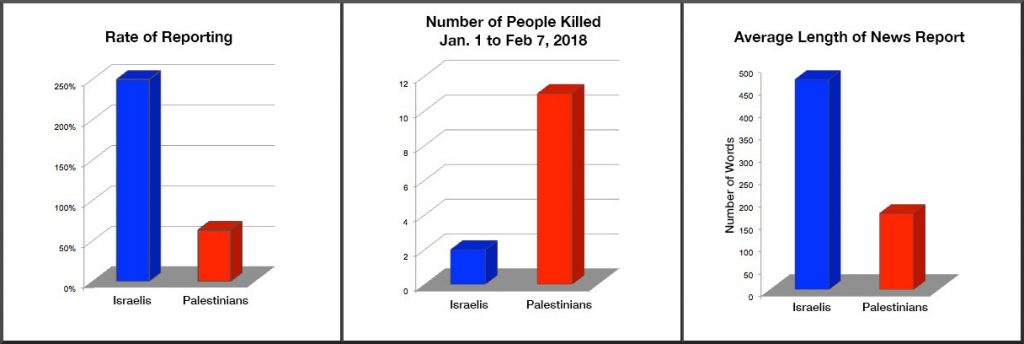
Since December 6th, when President Trump announced that the US would recognize Jerusalem as “the capital of Israel,” overturning decades of US policy, 27 Palestinians and 2 Israelis have died.
In AP’s 2018 news reports on deaths, the headlines reported on on Israeli deaths at a rate nearly four times greater than they reported on Palestinian deaths.
The articles themselves similarly focused more on Israeli deaths than on Palestinian deaths, with news reports on Israeli deaths averaging 471 words in length, while reports on Palestinian deaths averaged 171 words.
Two different kinds of stories
In addition to the number of words, AP’s choice of words, context, and which facts to report and which to omit appears to tell two totally different kinds of stories for Israelis and Palestinians.
Reports on Israeli deaths included statements by high ranking officials condemning the attacks. These were often strongly worded, politically charged statements that conveyed the Israeli narrative: “[Israel will] do everything possible in order to apprehend the despicable murderer”; “There is no justification for terror…This is not the path to peace!” “Hamas praises the killers and PA laws will provide them financial rewards. Look no further to why there is no peace.”
By contrast, these AP reports rarely included statements by Palestinian officials condemning the killing of Palestinians, which would have provided another perspective for readers. For example, Fatah spokesman Osama Qawassmeh released a statement declaring that Israel was guilty of a long list of actions that “contravene international law.”
Another Palestinian official condemned Israel’s “extrajudicial killings” and warned of Israel’s tendency to turn the West Bank into a “scene for escalation and security tension so as to pressure our people and leaders, and divert attention from colonialist expansion in our state.”
Such Palestinian viewpoints, largely accurate and readily available, were never reported in the AP articles on deaths.
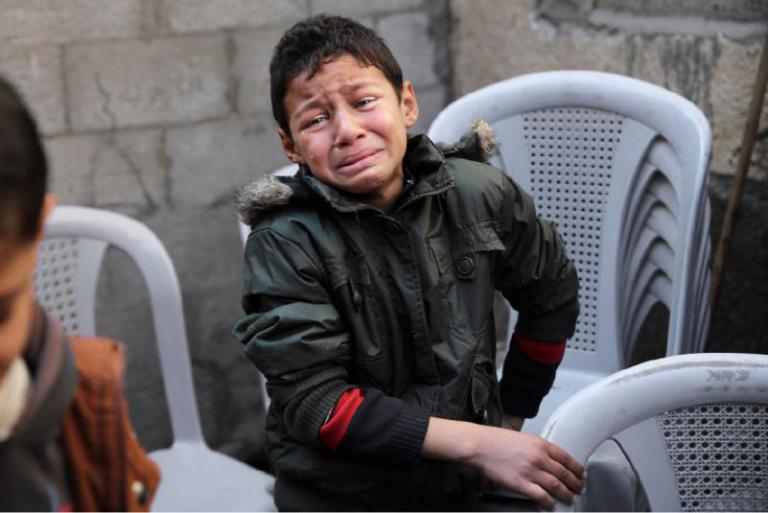
Israeli victims are human beings, Palestinian victims are “gunmen” or anonymous
Israeli victims were also personalized in AP reports: one was characterized as “a 29-year-old father of four”; the attempted rescue of another was described: “immense efforts were made to save the man’s life, but his wounds were too severe.”
On the other hand, AP reported Palestinian victims with impersonal, often negative descriptions: “armed protester,” “instigators,” and “protesters who were hurling massive amounts of rocks.”
Nowhere did AP describe efforts to save Palestinian victims’ lives, although those efforts were made and they were often described elsewhere.
Other news reports frequently described what happened to those attempting to assist Palestinian victims, for example: “Eyewitnesses said Israeli soldiers …. fired gas bombs at the Palestinian ambulances and medics that arrived on the scene.” In another incident, “soldiers refused to allow ambulances and firefighters to enter the area.”
These descriptions would have been valuable additions to the AP reports.
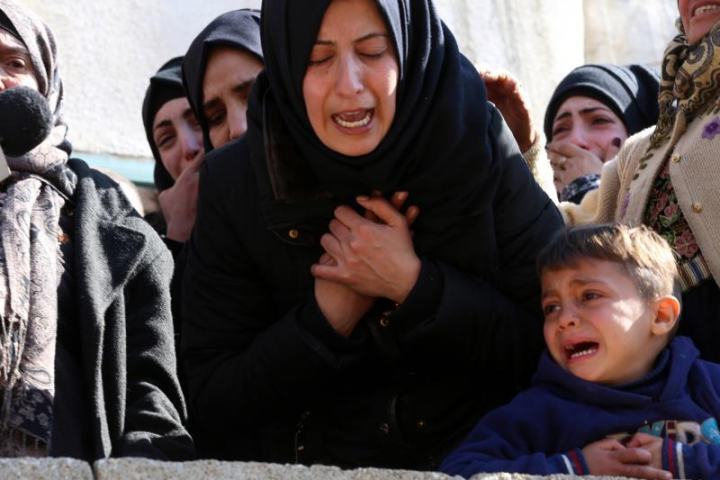
To its credit, AP did identify the five Palestinian teenagers killed as “teens” – in the past this has not always been the case, where the youth of Palestinian victims has often not been mentioned.
The actual killings of the Palestinians were often reported passively, e.g. “shot in the head during a stone-throwing confrontation” or “died in the violence.”
In two of the Palestinian deaths, AP reported that the Israeli military “denied using live fire.” The men were still dead, and no questions were asked.
In fact, other sources paint entirely different pictures of the killing of the Palestinians.
For example, one young man named Ali was only described by AP as “shot in the head” during a violent riot.
But according to eyewitnesses, as reported elsewhere, a number of armed Israeli settlers had infiltrated a Palestinian town, and Ali was part of a group that were forcing them out of town – at which time Israeli soldiers began firing at the group. Ali was reportedly killed by an army sharp-shooter.
In another incident, Israeli soldiers were searching for the man who had killed a settler a few days earlier. The AP article explains that they found and killed a suspect and then demolished three homes belonging to his extended family.
The article does not reveal that they killed the wrong man. It also does not mention that at least 30 vehicles participated in the invasion of the wrong home, and that soldiers confiscated surveillance videos from stores in the area.
AP headlines give Israeli spin
The headlines of the news reports are tellingly divergent as well.
In the cases of Israeli deaths, the headlines indicate one innocent party and one guilty party: “Israeli killed in West Bank shooting attack”; “Israeli killed by Palestinian in West Bank stabbing attack.”
On the other hand, most of the Palestinian death headlines suggest two equal parties in conflict: “Palestinian teen killed in clashes”; “2 teens killed in clashes with Israeli army”; “Troops kill Palestinian teen in West Bank clash.” (To see a fuller view of these deaths, go here.)
In one case, “Palestinians say Israeli army kills 19-year-old rock thrower,” the victim was at least acknowledged as an individual, but the situation in which Ahmad’s death occurred was misrepresented. The article claims that he was “shot in the head during a stone-throwing confrontation,” but there is much more to the story.
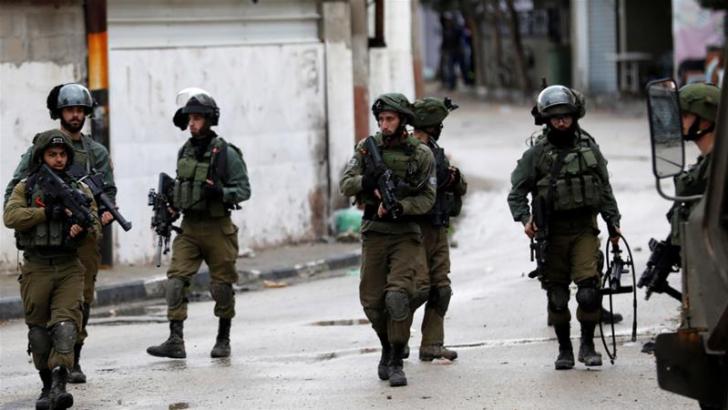
during a massive military invasion…carried out by twenty-two armored military vehicles, and two bulldozers…the soldiers also shot two other young Palestinian men with live rounds in their legs, and six with rubber-coated steel bullets, in addition to causing dozens to suffer the severe effects of teargas inhalation…soldiers broke into and searched many homes, and used K9 units in searching the properties, causing anxiety attacks among many Palestinians, especially children…
Some of the villagers protested this aggression, and it was in this context that an Israeli soldier shot Ahmad in the head.
In this incident, the Israeli army was searching for the killer of a settler named Rabbi Raziel Shevach, who had been killed three weeks earlier, and AP again recounted the details of this older death. In fact, there was more about the settler’s death, which had already been reported on several times, than about the innocent man killed in the manhunt.
According to AP, “The Israeli military had no immediate comment about the casualty.”
AP stories about Shevach reported that he taught in a religious school in Yitzhar and lived in the outpost of Havat Gilad. None, however, bothered to mention that Yitzhar has long been known as “an extremist bastion” of settler violence against Palestinians, home of the notorious Yitzchak Ginsburgh, and that Havat Gilad is similarly notorious for violence against Palestinians.
The Israeli newsapaper Ha’aretz reported in 2014, for example, “a wave of hate crimes against Palestinians and Israeli Arabs” involving close to 100 settlers known to be “far-right activists from the Yitzhar settlement and hilltop outposts north of Ramallah and the south Hebron Hills in the West Bank.” This is just one of many such incidents (see video here).
AP omits essential context

AP reports often leave out critical facts. For example, its news reports on a Palestinian girl imprisoned by Israel for slapping armed Israeli soldiers, almost always left out or minimized the fact that her anger was triggered by the fact that shortly before the incident, an Israeli soldier had shot her cousin in the face.
Perhaps more significant, essential facts about the greater issue are virtually never included.
Nowhere in these reports does AP tell readers that the U.S. gives Israel over $10 million per day. Without this information, American readers will incorrectly feel this is a foreign issue that has nothing to do with them.
Basic information that would give the reader an understanding of the context of the hostility is absent.
Nowhere in any of the articles does the word “occupation” occur, although the illegal Israeli occupation is a 50-year-old reality that affects every facet of Palestinian life. Omitting the fact that Palestinians are living under Israeli military control leaves readers ignorant of one of the most significant aspects of the conflict.
Nowhere in these reports does AP note that many Palestinian families in the West Bank and Gaza were pushed out by Israel during the 1948 war that created the Jewish state, their properties confiscated by Israel. These refugees have not been allowed to return and reclaim their homes, a violation of international law. This, too, is essential information.
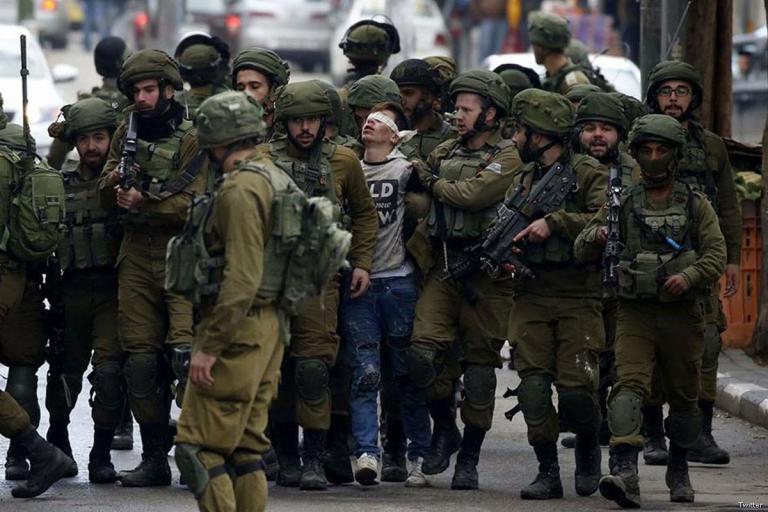
Nowhere does AP use the word “resistance,” the usual term for people fighting against military occupation. Instead, Palestinians are always “militants,” “gunmen,” “stone throwers,” etc. Americans fighting against the British in the 18th century, French fighting against the German occupation in the 20th century, etc. were resistance forces. So are Palestinians.
The word “settlement” is used 19 times in the AP reports. According to international law these settlements are illegal. However, only once does AP mention this fact, and even here it does so in a somewhat diluted manner: “most of the international community considers settlements illegal.”
Nowhere in these reports does AP inform readers that Israel is steadily stealing Palestinian land and imprisoning Palestinians who object to this. Nowhere do these report that Palestinians have virtually no freedom of movement, that some 70 percent of Palestinian families have had one or more family members serve time in an Israeli prison, that hundreds of Palestinian children are in prison, and that Israel is known for its physical abuse of prisoners.
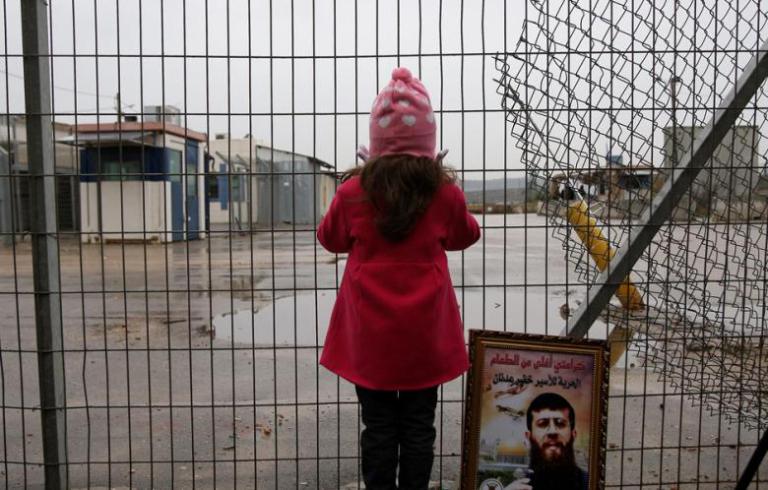
Without these and other critical details, it is impossible for readers to have a clear picture of the basis of the conflict and the context of the deaths.
At the end of one AP article is this statement:
Since 2015, Palestinians have killed over 50 Israelis, two visiting Americans and a British tourist in stabbings and other attacks. Over 260 Palestinians were killed by Israeli forces in that time. Israel says most were attackers and the others died in clashes.
To many editors and readers around the country, this means that 260 guilty Palestinians were killed. “Attackers” are guilty by default (“alleged attackers” might be innocent); people in “clashes” are reckless mobs, confronting soldiers and policemen allegedly working to keep the peace. Readers are left to glean on their own, with next to zero evidence, that these Israeli forces are one of the world’s most powerful militaries putting down protests by an occupied, unarmed population.
Astute, knowledgeable readers might wonder how many of those dead Palestinians were really attackers? How many were cases of mistaken identity? And what about those who actually were attacking heavily armed soldiers and settlers… why were they doing this? Could it be because Israel was stealing their land and had killed, injured, and/or imprisoned hundreds of Palestinian children?
And what about the unarmed protesters so often shot in the head by Israeli soldiers? Did they have families who grieve for them? Children who are now orphans? Widows who will weep and struggle? Parents who will forever miss them? We will never know.
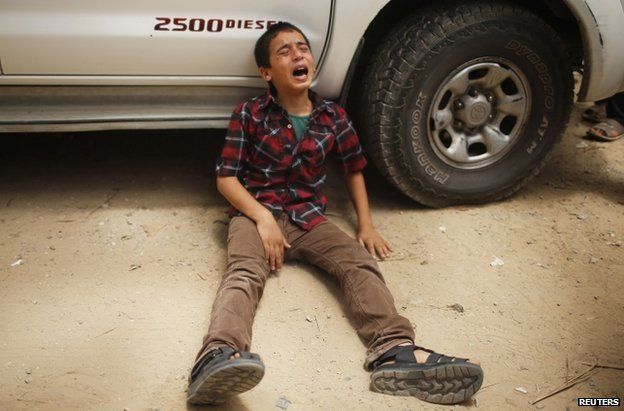
How many of those dead Palestinians were children themselves? Answer: Since January 2015, at least 100 Palestinian children and 1 Israeli child have been killed in the hostilities. Between 2000 and 2014, 2,079 Palestinian children and 133 Israeli children lost their lives.
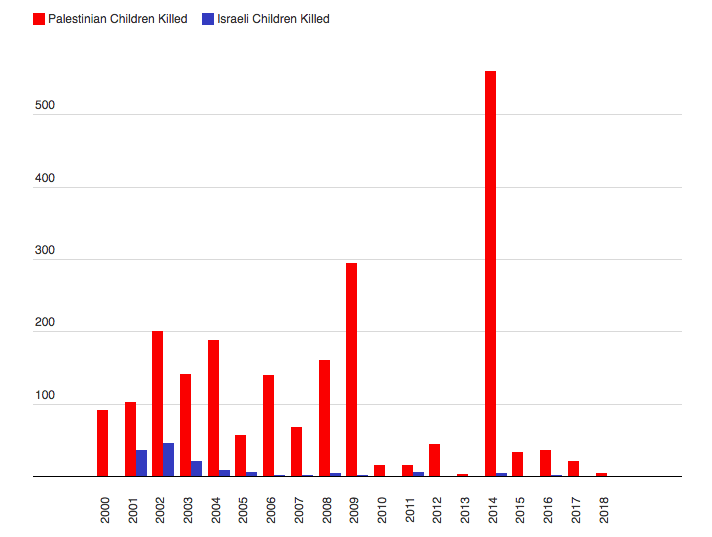
The headline for this death, “Israeli troops kill Palestinian suspect in settler’s killing,” refers to Rabbi Raziel Shevach’s death in early January. Apparently this time the Israeli military finally found the person they “suspected of being behind the killing” that they had been pursuing. They stormed the house where he was staying, and shot him dead (this may be referred to as “trial by assassination” or “extrajudicial killing”).
The AP article recalls that Israeli troops had already demolished the suspect’s residence (and those of his extended family), but somehow neglects to mention that they had also killed his cousin, who had done nothing wrong even according to the Israeli military, as well as another innocent man, during the course of the aggressive manhunt.
And once again, the article mostly discusses the death of the Israeli settler (as well as repeating details about the other Israeli death that occurred in 2018), and mentions nothing about the Palestinian who had just been killed. Did he have children? Parents? A wife? And if he actually was “behind the killing,” what had motivated him?
In the very last paragraph of the article, AP finally mentions that “19 Palestinians have been killed in the violence since Trump’s announcement.” In reality, it was Israelis who killed these people, and it was actually 24 Palestinians at that time, seven of them teenagers, plus a small boy who died on the day of the announcement.
The Associated Press claims on its website:
For 170 years, we have been breaking news and covering the world’s biggest stories, always committed to the highest standards of objective, accurate journalism.
It is possible that the time has come for AP to take a good, hard look at its objectivity and accuracy when it comes to reporting in Israel-Palestine.
AP’s system of reporting
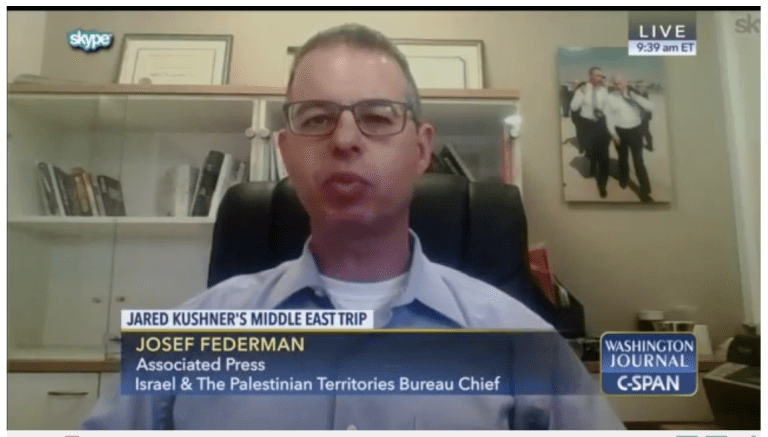
AP’s main bureau for Israel-Palestine is in Israel. Reports from Gaza and the West Bank are usually phoned in to this bureau, where its editors choose and write the news stories that are sent out.
Many (possibly most) of the journalists in this main bureau are Israeli citizens or have partners who are. Some (possibly most) have served in the Israeli military and/or have relatives that have done so. While this doesn’t guarantee pro-Israel bias (some Israeli journalists for Ha’aretz, for example, are excellent, accurate writers on this issue) it does suggest the possibility of partiality influencing their work, either consciously or unconsciously.
It is essential that AP be transparent about its reporting on this extremely important issue.
Whatever the cause of the distortion that continuously characterizes its reporting on this region (see this 2005 report on AP reporting on deaths), it is critical that AP remedy it. Americans, who give Israel over $10 million per day, need full, accurate, unbiased reporting.
Last-minute updates: Two more Palestinians killed
Sadly, during the final edit of this piece, two more Palestinians were killed.
IMEMC, the International Middle East Media Center, has posted the following:
“Israeli soldiers killed, on Tuesday at night, a young Palestinian man, and injured 110, including 32 who were shot with live ammunition, in Nablus city, in the northern part of the occupied West Bank. The Palestinian Health Ministry has identified the Palestinian as Khaled Waleed Tayeh, 22, from Iraq-Tayeh village, east of Nablus. Khaled succumbed to his wounds, after being shot with a live round in the chest.”

AP also reports the story: “Israeli guard kills Palestinian after West Bank stabbing” but fails to report the victim’s name, age, or anything else about him.
A few hours later Israeli guards in front of an Israeli outpost shot dead 19-year-old Hamza Yousef No’man Zama’ra, who had attacked one of the armed guards with a knife, cutting the man’s hand. AP reported the death but again failed to give Hamza’s name, age, or additional information about him.

AP also fails to mention that Israel plans to level dozens of Palestinian schools in the West Bank, that Israeli forces have just detained a 52-year-old Palestinian mother and shot a teenager in the face, and that 54 Palestinian patients in critical need of specialized medical care died in 2017 when Israel wouldn’t let them leave Gaza.
Perhaps to the AP editors, these stories are of no importance.
However, for many Americans, most of whom believe in justice, fair play, and human rights, such information might diminish the willingness to give Israel massive amounts of their tax money.
* * *
For a list of all Palestinians and Israelis who have been killed by the other side since 2000, see this timeline.
For 2-minute videos of recent Palestinian victims, go here.
Kathryn Shihadah is a staff writer for If Americans Knew, and Alison Weir is executive director.
